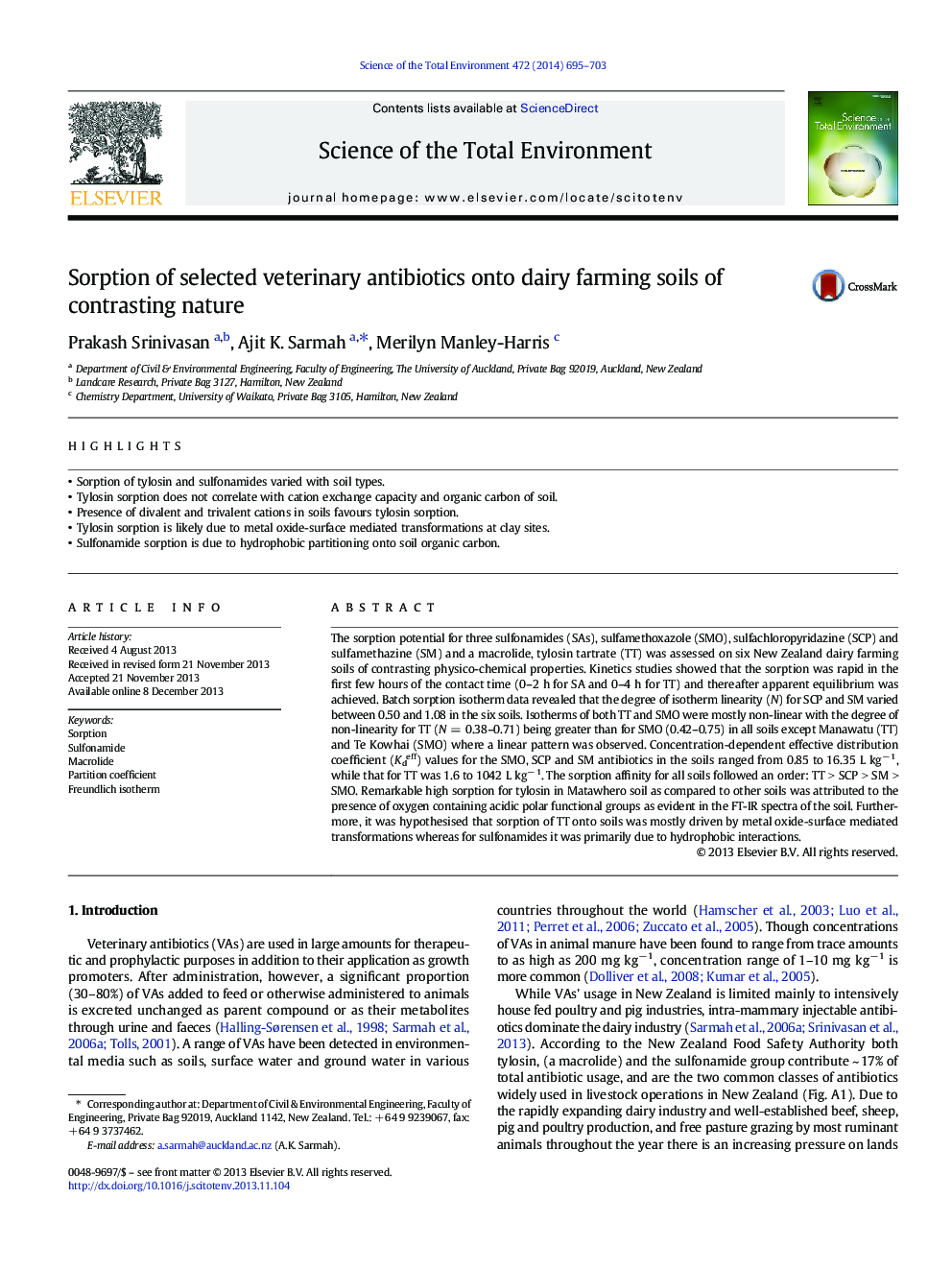| Article ID | Journal | Published Year | Pages | File Type |
|---|---|---|---|---|
| 6331236 | Science of The Total Environment | 2014 | 9 Pages |
Abstract
The sorption potential for three sulfonamides (SAs), sulfamethoxazole (SMO), sulfachloropyridazine (SCP) and sulfamethazine (SM) and a macrolide, tylosin tartrate (TT) was assessed on six New Zealand dairy farming soils of contrasting physico-chemical properties. Kinetics studies showed that the sorption was rapid in the first few hours of the contact time (0-2 h for SA and 0-4 h for TT) and thereafter apparent equilibrium was achieved. Batch sorption isotherm data revealed that the degree of isotherm linearity (N) for SCP and SM varied between 0.50 and 1.08 in the six soils. Isotherms of both TT and SMO were mostly non-linear with the degree of non-linearity for TT (N = 0.38-0.71) being greater than for SMO (0.42-0.75) in all soils except Manawatu (TT) and Te Kowhai (SMO) where a linear pattern was observed. Concentration-dependent effective distribution coefficient (Kdeff) values for the SMO, SCP and SM antibiotics in the soils ranged from 0.85 to 16.35 L kgâ 1, while that for TT was 1.6 to 1042 L kgâ 1. The sorption affinity for all soils followed an order: TT > SCP > SM > SMO. Remarkable high sorption for tylosin in Matawhero soil as compared to other soils was attributed to the presence of oxygen containing acidic polar functional groups as evident in the FT-IR spectra of the soil. Furthermore, it was hypothesised that sorption of TT onto soils was mostly driven by metal oxide-surface mediated transformations whereas for sulfonamides it was primarily due to hydrophobic interactions.
Related Topics
Life Sciences
Environmental Science
Environmental Chemistry
Authors
Prakash Srinivasan, Ajit K. Sarmah, Merilyn Manley-Harris,
